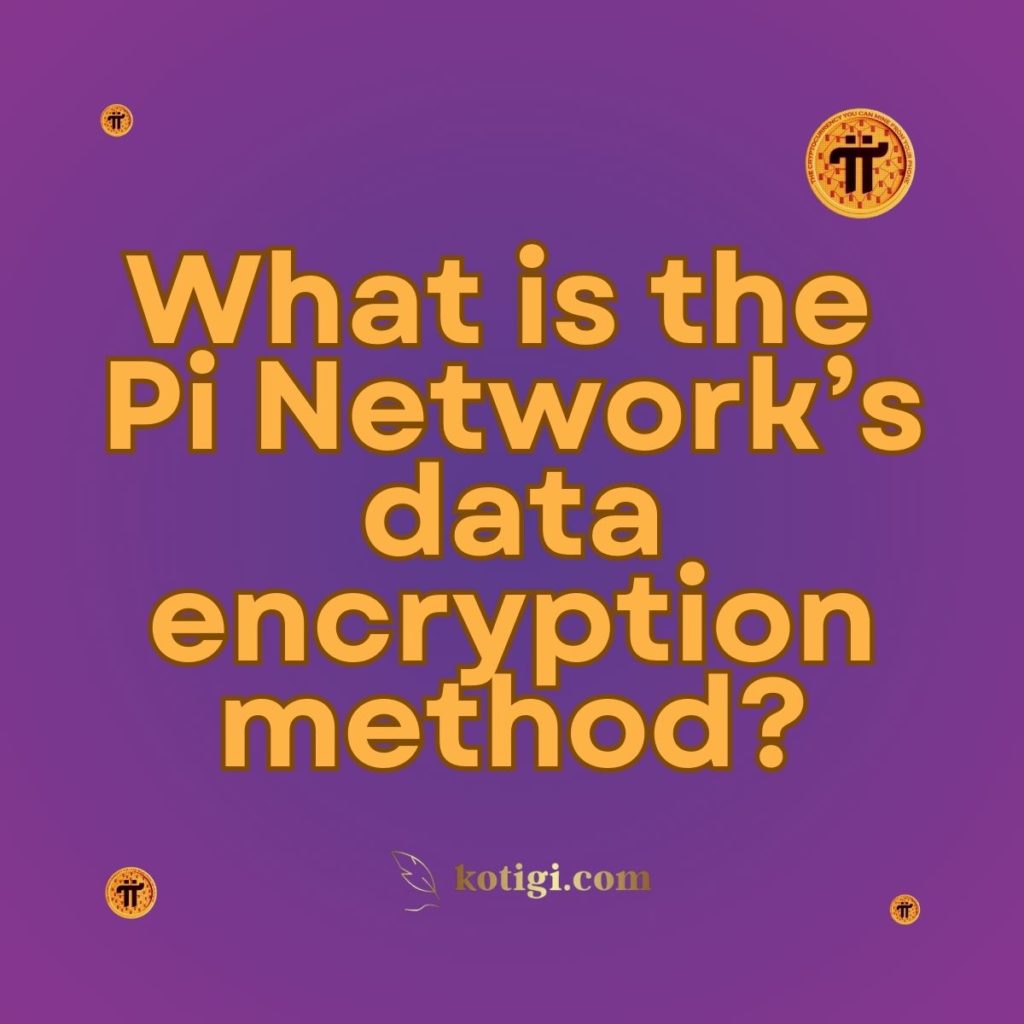
What is the Pi Network’s data encryption method?
The Pi Network employs robust data encryption methods to secure user information and transactions, ensuring confidentiality and integrity. Utilizing advanced cryptographic techniques, the network protects sensitive data from unauthorized access and potential breaches, fostering a secure environment for its users.
Introduction
Data encryption is a fundamental aspect of any cryptocurrency network, playing a vital role in safeguarding user information and ensuring the security of transactions. In the case of the Pi Network, which prioritizes user accessibility and engagement, robust data encryption methods are employed to protect sensitive information from unauthorized access and ensure the integrity of transactions.
This blog post will explore the data encryption methods used by the Pi Network, their significance, the technologies involved, and how they contribute to the overall security of the network. Understanding these encryption methods is crucial for users who wish to engage confidently with the Pi Network and utilize its cryptocurrency effectively.
Understanding Data Encryption
Data encryption is the process of converting information into a coded format to prevent unauthorized access. This method secures sensitive data, making it unreadable without the appropriate decryption key. Encryption is critical in protecting personal information, financial transactions, and other confidential data from potential threats.
Key Components of Data Encryption
Several key components are involved in data encryption:
- Plaintext: This is the original, readable data that needs to be encrypted.
- Cipher: A cipher is the algorithm used to perform the encryption. It transforms plaintext into ciphertext.
- Ciphertext: This is the encrypted data that results from the encryption process. Ciphertext is unreadable without decryption.
- Key: The key is a string of characters used by the cipher to encrypt and decrypt the data. The security of the encryption relies heavily on the complexity and secrecy of the key.
Importance of Data Encryption
Data encryption is essential for several reasons:
- Confidentiality: Encryption ensures that sensitive data remains private, protecting it from unauthorized access.
- Integrity: Encrypted data can be validated to ensure it has not been tampered with during transmission.
- Authentication: Encryption can verify the identity of users and systems, ensuring that only authorized individuals can access sensitive information.
Data Encryption Methods Used by the Pi Network
The Pi Network employs advanced data encryption methods to secure user information and transactions. Here’s an overview of the encryption techniques used within the network:
Symmetric Encryption
Symmetric encryption is a method where the same key is used for both encryption and decryption. This approach is efficient for encrypting large amounts of data quickly.
- Algorithm: The Pi Network may use symmetric encryption algorithms such as Advanced Encryption Standard (AES). AES is widely recognized for its security and efficiency, making it suitable for encrypting sensitive data.
- Key Management: In symmetric encryption, managing the secrecy of the key is crucial. The Pi Network employs secure key management practices to ensure that encryption keys are not exposed to unauthorized parties.
Asymmetric Encryption
Asymmetric encryption, also known as public-key cryptography, involves the use of two keys: a public key and a private key. This method enhances security by allowing users to encrypt data with a public key, which can only be decrypted with the corresponding private key.
- Public Key Infrastructure (PKI): The Pi Network may implement PKI to manage the public and private keys. PKI ensures that keys are issued, revoked, and managed securely, providing a framework for secure communications.
- Secure Transactions: Asymmetric encryption enables secure transactions within the Pi Network. Users can send encrypted messages or transaction details that only the intended recipient can decrypt, ensuring confidentiality.
Hashing
Hashing is a one-way encryption method that converts data into a fixed-length string of characters. It is commonly used for verifying data integrity.
- Purpose: In the Pi Network, hashing can be used to store user passwords securely. When users create an account, their passwords are hashed before being stored, making it difficult for unauthorized parties to access the original password.
- Algorithm: The Pi Network may use secure hashing algorithms such as SHA-256 (Secure Hash Algorithm 256-bit) to ensure the integrity of hashed data.
The Significance of Data Encryption in the Pi Network
Data encryption plays a crucial role in the overall security and functionality of the Pi Network. Here’s why encryption is significant:
Protecting User Privacy
Data encryption ensures that user information remains confidential. By securing personal data, the Pi Network fosters trust among its users, encouraging them to engage with the platform without fear of data breaches or unauthorized access.
Securing Transactions
The Pi Network’s cryptocurrency transactions involve the transfer of value between users. Data encryption protects these transactions from interception and fraud, ensuring that users’ funds are secure during transfers.
Building Trust and Confidence
A secure environment is essential for building trust within the cryptocurrency community. By employing robust encryption methods, the Pi Network instills confidence among users, promoting a healthy and active user base.
Challenges and Considerations in Data Encryption
While data encryption is vital for security, it also presents certain challenges and considerations:
Key Management
Managing encryption keys securely is crucial to the effectiveness of encryption methods. If a key is compromised, the security of the encrypted data is at risk. The Pi Network must implement robust key management practices to safeguard sensitive information.
Performance Trade-offs
Encryption can introduce performance overhead, especially when dealing with large volumes of data. The Pi Network must balance the need for security with the performance requirements of the network to ensure a seamless user experience.
Regulatory Compliance
Data encryption is subject to various regulations and standards, depending on the jurisdiction. The Pi Network must ensure that its encryption practices comply with relevant laws and regulations to protect user data and maintain trust.
Conclusion
Data encryption is a critical component of the Pi Network, ensuring the security and privacy of user information and transactions. By employing advanced encryption methods such as symmetric and asymmetric encryption, as well as hashing, the Pi Network protects sensitive data from unauthorized access and potential breaches.
As the Pi Network continues to grow and evolve, the importance of robust data encryption will only increase. By fostering a secure environment for its users, the Pi Network enhances user trust and encourages active participation within its ecosystem.
Key Takeaways
- The Pi Network employs robust data encryption methods to secure user information and transactions.
- Key components of data encryption include plaintext, ciphers, ciphertext, and keys.
- Symmetric and asymmetric encryption methods are used to protect sensitive data and ensure secure transactions.
- Hashing is employed to verify data integrity and secure user passwords.
- Data encryption is crucial for protecting user privacy, securing transactions, and building trust within the network.




